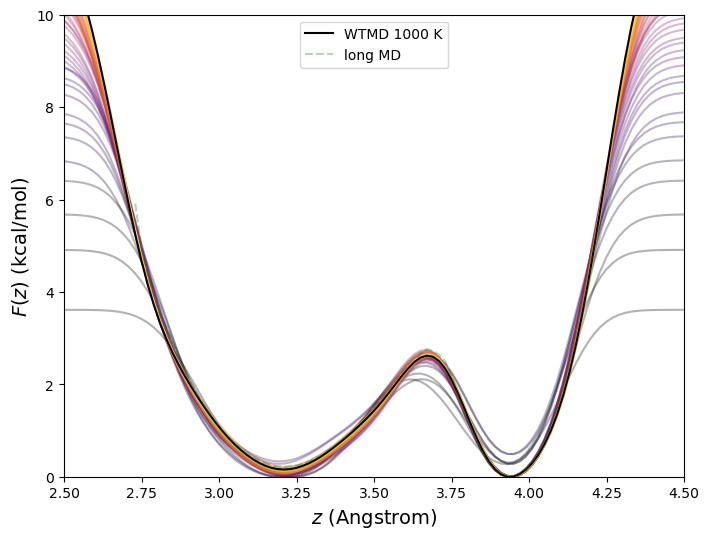In the well-tempered variant [49] of metadynamics, The weight  is augmented with a Boltzmann factor that diminishes exponentially as
is augmented with a Boltzmann factor that diminishes exponentially as  builds up:
builds up:
![$\displaystyle V_b(\theta,t) = w\sum_{t^\prime < t}\exp\left[-\frac{V_b(\theta(t...
...] \exp\left(-\frac{\left[\theta(t^\prime)-\theta(t)\right]^2}{2\sigma^2}\right)$](img949.png) |
(365) |
 is the so-called “bias temperature”, and it acts to diminish the contribution to
is the so-called “bias temperature”, and it acts to diminish the contribution to  at any
at any  as time progresses, leading to a converged bias potential. The free energy is reconstructed by an inversion of the converged bias potential that requires the bias temperature:
as time progresses, leading to a converged bias potential. The free energy is reconstructed by an inversion of the converged bias potential that requires the bias temperature:
 |
(366) |
Fig. 48 shows the free energy vs. C1-C4 distance for butane at 273 K computed using well-tempered metadynamics with parameters identical to the standard metadynamics run of the previous section but with a bias temperature of 1000 K.
cfa22@drexel.edu
![]() is augmented with a Boltzmann factor that diminishes exponentially as
is augmented with a Boltzmann factor that diminishes exponentially as ![]() builds up:
builds up:
